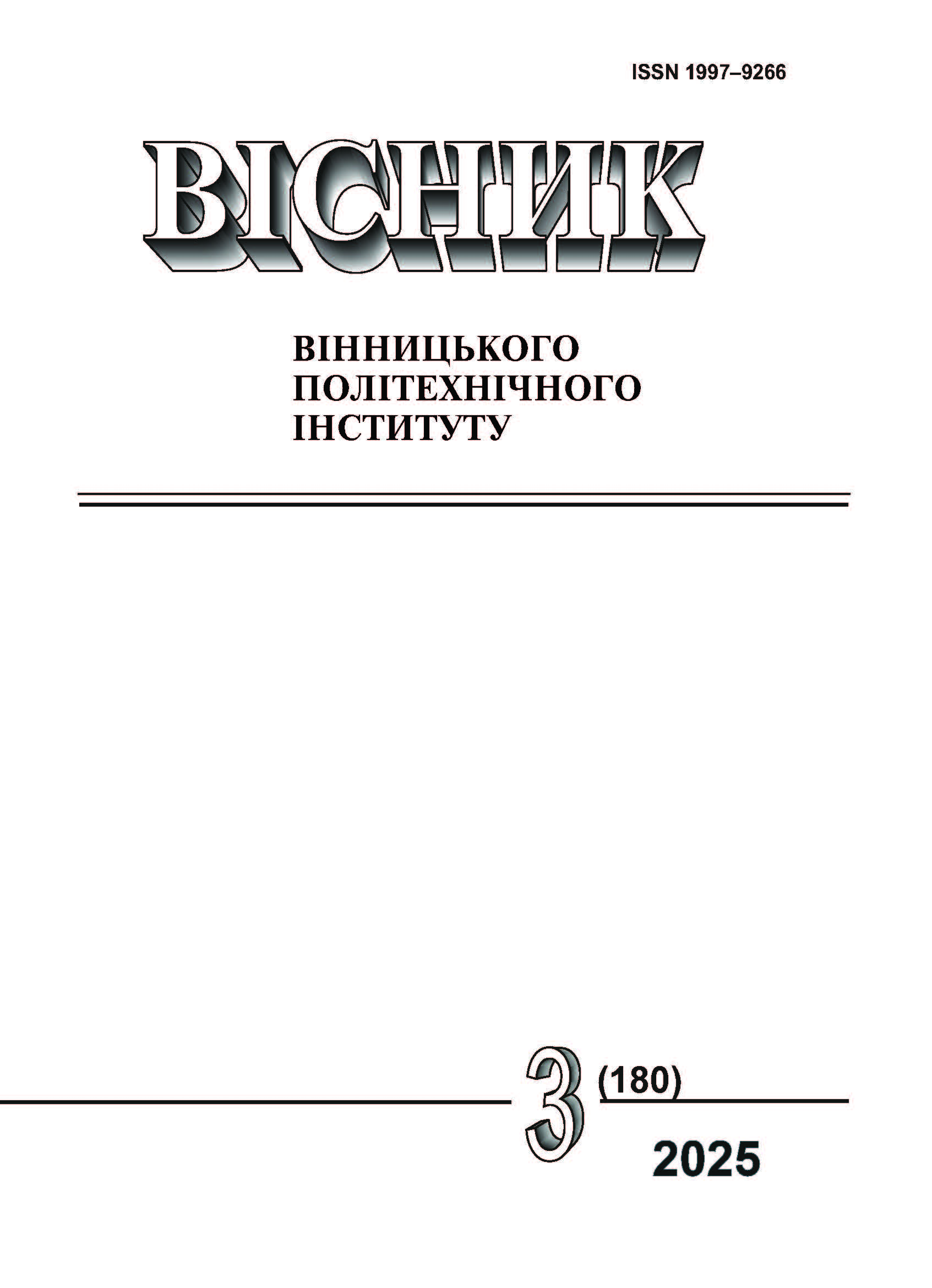Application of Machine Learning for Target Audience Clustering in Web Applications
DOI:
https://doi.org/10.31649/1997-9266-2025-180-3-121-125Keywords:
machine learning, clustering, web application, target audience, e-commerceAbstract
In this study, a machine learning method was applied for clustering data on the target audience of e-commerce web applications. Machine learning is a powerful analytical tool that enables the automatic identification of patterns in large datasets, improving the accuracy of user behavior prediction. Key interaction metrics with web applications were selected, including bounce rate, session duration, and conversion rate. The input data were normalized. To ensure proper normalization and the correct operation of machine learning algorithms, a method was used to scale values within the range from zero to one. The optimal number of clusters was determined using the "elbow" method, which analyzes the relationship between the number of clusters and the within-cluster sum of squared distances. The k-means method was applied to analyze behavioral parameters, minimizing the sum of squared distances between data points and cluster centroids using the Euclidean metric. The results were visualized using a three-dimensional plot, representing the distribution of clusters based on the analyzed parameters.
The clustering results identified four groups of users with different interaction characteristics with the web resource. Users in the first cluster exhibited low engagement, short session durations, and high bounce rates, indicating insufficient content relevance. The second cluster demonstrated prolonged interaction with the web resource, but the high bounce rate may suggest navigation difficulties. The third cluster was characterized by a high conversion rate with moderate session duration, indicating an efficient user experience. The last cluster had the lowest bounce rate and the highest conversion rate, reflecting a strong alignment between content and user needs.
The practical significance of the obtained results lies in the possibility of applying clustering methods to adapt UX/UI solutions, optimize content, and enhance conversion rates. The proposed approach can be utilized in e-commerce, digital marketing, and web analytics to improve user interaction strategies.
References
СПИСОК ВИКОРИСТАНОЇ ЛІТЕРАТУРИ
K. Sharifani, and M. Amini, “Machine learning and deep learning: A review of methods and applications,” World Information Technology and Engineering Journal, vol. 10, no. 07, pp. 3897-3904, 2023.
S. M. Javidan, A. Banakar, K. A. Vakilian, and Y. Ampatzidis, “Diagnosis of grape leaf diseases using automatic K-means clustering and machine learning,” Smart agricultural technology, vol. 3, pp. 100081, 2023. https://doi.org/10.1016/j.atech.2022.100081 .
D. Abdullah, S. Susilo, A. S. Ahmar, R. Rusli, and R. Hidayat, “The application of K-means clustering for province clustering in Indonesia of the risk of the COVID-19 pandemic based on COVID-19 data,” Quality & quantity, vol. 56, no. 3, pp. 1283-1291. 2022. https://doi.org/10.1007/s11135-021-01176-w .
R. Vankayalapati, K. B. Ghutugade, R. Vannapuram, and B. P. S. Prasanna, “K-Means algorithm for clustering of learners performance levels using machine learning techniques,” Rev. d'Intelligence Artif., vol. 35, no. 1, pp. 99-104, 2021. https://doi.org/10.18280/ria.350112 .
B. D. Puspasari, L. L. Damayanti, A. Pramono, and A. K. Darmawan, “Implementation K-means clustering method in job recommendation system,” in 2021 IEEE 7th International Conference on Electrical, Electronics and Information Engineering (ICEEIE), Malang, Indonesia, 2021, pp. 1-6. https://doi.org/10.1109/ICEEIE52663.2021.9616654 .
P. Chaipornkaew, and T. Banditwattanawong, “A recommendation model based on user behaviors on commercial websites using TF-IDF, KMeans, and Apriori algorithms,” in International Conference on Computing and Information Technology. Cham: Springer International Publishing, 2021, pp. 55-65. https://doi.org/10.1007/978-3-030-79757-7_6 .
H. Singh, and Kaur, P, “An effective clustering-based web page recommendation framework for e-commerce websites,” SN Computer Science, vol. 2, no. 4, pp. 339, 2021. https://doi.org/10.1007/s42979-021-00736-z .
S. SadighZadeh, and M. Kaedi, “Modeling user preferences in online stores based on user mouse behavior on page elements,” Journal of Systems and Information Technology, vol. 24, no. 2, pp. 112-130. 2022. https://doi.org/10.1108/JSIT-12-2019-0264 .
Downloads
-
pdf (Українська)
Downloads: 46
Published
How to Cite
Issue
Section
License

This work is licensed under a Creative Commons Attribution 4.0 International License.
Authors who publish with this journal agree to the following terms:
- Authors retain copyright and grant the journal right of first publication.
- Authors are able to enter into separate, additional contractual arrangements for the non-exclusive distribution of the journal's published version of the work (e.g., post it to an institutional repository or publish it in a book), with an acknowledgment of its initial publication in this journal.
- Authors are permitted and encouraged to post their work online (e.g., in institutional repositories or on their website) prior to and during the submission process, as it can lead to productive exchanges, as well as earlier and greater citation of published work (See The Effect of Open Access).





